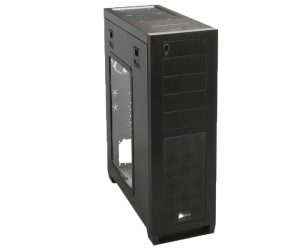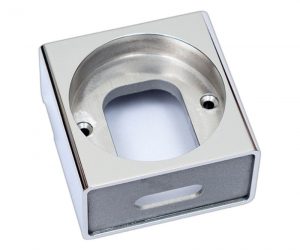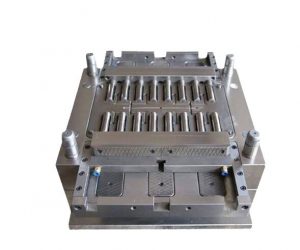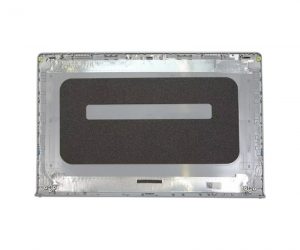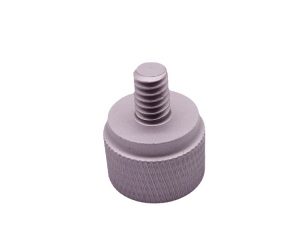If you're in the plastics processing industry or looking to expand your manufacturing capabilities, a plastic injection molding machine is a must-have. These machines are responsible for producing everything from automobile parts to consumer goods and medical devices. However, investing in new machinery can be expensive, which is why many businesses choose to purchase second-hand plastic injection molding machines. In this guide, we’ll explore the ins and outs of second-hand machines, including how they work, the pros and cons of buying used equipment, and factors to consider before making a purchase.
What is a Plastic Injection Molding Machine?
A plastic injection molding machine is a device used to create plastic products by injecting molten plastic into a pre-designed mold. The plastic material, typically in the form of small pellets, is first heated until it reaches a molten state. Then, it's injected into a mold under high pressure, where it cools and solidifies to form the desired shape. Once cooled, the mold opens, and the finished part is ejected.
Injection molding machines are widely used in various industries to produce parts in bulk with high precision, making them a cornerstone of modern manufacturing. Common applications include:
- Automobile parts
- Home appliances
- Packaging
- Consumer electronics
- Toys
- Medical devices
How Do Plastic Injection Molding Machines Work?
The process of plastic injection molding involves several key stages:
- Plastic Melting: The plastic pellets are heated in a barrel until they melt into a viscous liquid.
- Injection: The molten plastic is then injected into the mold under high pressure.
- Cooling: After the mold is filled, the plastic cools and solidifies to the shape of the mold.
- Ejection: Once cooled, the mold opens, and the part is ejected from the mold cavity.
- Finishing: Any post-processing steps, such as trimming or assembly, are carried out if necessary.
Pros and Cons of Buying a Used Plastic Injection Molding Machine
Pros
- Cost Savings
The most significant advantage of buying a used plastic injection molding machine is cost savings. A second-hand machine typically costs much less than a new one, making it an appealing option for businesses on a budget or for those just starting out. - Proven Performance
If you're purchasing a machine that has been in use for a while, its performance and reliability may already be tested. A used machine that has been properly maintained will likely still have many years of service ahead of it. - Lower Depreciation
A new machine loses value the moment it's purchased. A used machine has already experienced significant depreciation, which means you won’t lose as much value if you decide to sell it later. - Faster Setup Time
Since many used machines are already set up and ready to go, you may experience less downtime compared to setting up a new machine from scratch. The learning curve for used machines is typically shorter if the model is familiar to your team.
Cons
- Higher Maintenance Costs
Although a used machine may be cheaper upfront, it could come with increased maintenance costs. Parts may be worn out or outdated, and you may need to replace certain components sooner than you would with a new machine. - Limited Warranty and Support
Many used machines are sold "as-is," meaning you might not get a warranty or after-sales support. This can pose a risk if the machine breaks down, and you may need to pay for repairs out of pocket. - Potential Hidden Issues
If the machine has been poorly maintained or has suffered from wear and tear, it may have hidden issues that aren’t immediately apparent. Without a thorough inspection, you could end up with a machine that requires costly repairs. - Outdated Technology
Used machines may not have the latest technological upgrades or features, such as energy-saving systems, better precision, or automated control systems. Depending on your needs, this could impact the overall performance of your production line.
Factors to Consider When Choosing a Used Plastic Injection Molding Machine
When choosing a used injection molding machine for your business, it’s essential to evaluate various factors to ensure that the machine meets your production needs. Below are some critical aspects to consider:
1. Production Needs
- Part Size: Consider the size and complexity of the parts you need to produce. Injection molding machines come in various sizes, with larger machines capable of handling bigger molds and parts.
- Tonnage Capacity: The tonnage of the machine refers to the clamping force it can apply. Ensure that the machine's tonnage is suitable for the size and material of the parts you're manufacturing.
- Shot Size: The amount of material the machine can inject per cycle is another important factor. Ensure the shot size matches your requirements.
2. Machine Condition
- Inspection: Have a professional inspect the machine for signs of wear, rust, or damage. Look at the mechanical parts, hydraulic systems, and electrical components. Ask for a maintenance log or service history to verify how well the machine has been maintained.
- Trial Run: If possible, request a trial run to ensure the machine operates as expected. This can help you identify any potential issues before purchase.
3. Performance and Reliability
- Ensure the machine's performance will meet your production goals. This includes the machine's cycle time, injection speed, and clamping force. Verify that the machine can handle the required production volume and produce parts with the necessary precision.
- Machine Age: Older machines may have more wear and tear and could lack modern features, but this doesn't necessarily mean they’re unreliable. Machines that have been properly maintained can still offer many years of use.
4. Cost of Repairs and Maintenance
- When buying a used machine, consider the cost of future repairs. Older machines may require more frequent servicing, and spare parts might be harder to find. Investigate the availability of replacement parts for the specific model you're considering.
5. Energy Efficiency
- Older machines can be less energy-efficient compared to newer models. Consider the energy consumption of the used machine and whether it will fit within your budget in terms of long-term operating costs.
6. Compatibility with Materials and Molds
- Make sure that the used machine is compatible with the materials you plan to process and the molds you use. Some machines may not work well with certain plastic types or may need additional modifications to handle specific molds.
7. Seller Reputation and Warranty
- Buy from reputable dealers or manufacturers who provide warranties or at least guarantees that the machine is in good working order. Look for a seller with a strong track record of selling used equipment and who can provide full documentation.
Additional Considerations
- Installation and Setup: Factor in the cost and time required for installation, transportation, and setup. Some used machines may need to be refurbished or upgraded to match your current production standards.
- Energy Saving Features: If energy efficiency is a priority for your business, look for used machines with energy-saving technologies. Some newer used machines might offer advanced energy-saving features.
- Training and Support: Ensure that you have access to proper technical support and that your team receives adequate training on how to operate the machine effectively.
Conclusion
Buying a used plastic injection molding machine can be a great way to save on costs while expanding your manufacturing capabilities. However, there are risks involved, so it’s essential to carefully evaluate the machine’s condition, performance, and suitability for your production needs. By considering factors like production requirements, machine specifications, maintenance costs, and the seller's reputation, you can make an informed decision and find a reliable machine that will meet your business's needs.
We hope this guide has helped you understand the pros and cons of buying a used injection molding machine and the key factors to consider. If you have any further questions or need assistance with finding the right machine for your business, don’t hesitate to contact us!
What is a Plastic Injection Press?
A plastic injection press, also known as an injection molding machine or an injection press, is a machine that produces plastic parts by injecting molten plastic into a mold cavity. The mold cavity is usually made of metal and has the shape of the desired part. The plastic injection press can produce complex and intricate shapes with high precision and accuracy.
A plastic injection press consists of two main components: an injection unit and a clamping unit. The injection unit is responsible for melting, mixing, and injecting the plastic material into the mold cavity. The clamping unit is responsible for holding and closing the mold during the injection process and opening it after the part has cooled and solidified.
There are different types of plastic injection presses based on the method of injection, the type of plastic material, and the configuration of the machine. Some of the common types are:
- Horizontal injection presses: These are the most common type of plastic injection presses, where the injection unit and the clamping unit are aligned horizontally.
- Vertical injection presses: These are less common than horizontal injection presses, where the injection unit and the clamping unit are aligned vertically.
- Electric injection presses: These are plastic injection presses that use electric motors instead of hydraulic systems to power the machine. They are more energy-efficient, precise, and clean than hydraulic injection presses.
- Hybrid injection presses: These are plastic injection presses that combine electric and hydraulic systems to power the machine. They offer some of the advantages of both electric and hydraulic injection presses.
- PET injection presses: These are plastic injection presses that are specially designed for processing PET (polyethylene terephthalate) material, which is commonly used for making bottles and containers.
- Foam injection presses: These are plastic injection presses that inject gas into the molten plastic material to create foam-like parts with reduced weight and improved insulation properties.
- Rubber injection presses: These are plastic injection presses that process rubber material instead of plastic material. They are used for making rubber parts such as seals, gaskets, and hoses.
- Silicone-Liquid injection presses: These are plastic injection presses that process liquid silicone material instead of plastic material. They are used for making silicone parts such as medical devices, implants, and gels.
- Thermoset injection presses: These are plastic injection presses that process thermoset material instead of thermoplastic material. Thermoset material is a type of plastic material that undergoes irreversible chemical changes when heated and cannot be remelted or recycled. They are used for making parts with high heat resistance, strength, and durability.
How Does a Plastic Injection Press Work?
The basic working principle of a plastic injection press is as follows:
- The plastic material, usually in the form of pellets or granules, is fed into a hopper at the top of the injection unit.
- The plastic material is then conveyed by a screw or a plunger into a heated barrel, where it is melted and mixed by friction and external heaters.
- The molten plastic material is then injected into a mold cavity through a nozzle at high pressure and speed.
- The mold cavity is held closed by a clamping unit that applies sufficient force to withstand the injection pressure.
- The molten plastic material fills the mold cavity and takes the shape of the mold.
- The molten plastic material cools down and solidifies inside the mold cavity, forming the final part.
- The clamping unit opens and ejects the part from the mold cavity.
- The cycle repeats for producing more parts.
Benefits and Drawbacks of Buying a Used Plastic Injection Press
Buying a used plastic injection press can be a cost-effective option for businesses that need to produce plastic parts but have limited budget or space. However, there are also some risks and challenges involved in buying a used machine. Here are some of the benefits and drawbacks of buying a used plastic injection press:
Benefits
- Lower initial cost: Buying a used plastic injection press can save you a significant amount of money compared to buying a new one. You can find used machines in various conditions and prices, depending on the age, brand, model, and features of the machine. You can also negotiate with the seller to get a better deal.
- Faster delivery: Buying a used plastic injection press can save you time as well. You can find used machines that are ready to ship or pick up, whereas buying a new machine may require a longer lead time for manufacturing and delivery. You can also avoid the hassle of dealing with customs and import duties if you buy a used machine locally or from a nearby country.
- Availability of spare parts: Buying a used plastic injection press can also give you access to spare parts that may be hard to find or expensive for new machines. You can find spare parts from the original manufacturer, the seller, or other sources such as online platforms, auctions, or dealers. You can also use parts from other used machines that are compatible with your machine.
Drawbacks
- Higher maintenance cost: Buying a used plastic injection press can also incur higher maintenance cost in the long run. Used machines may have more wear and tear, defects, or damages that require frequent repairs or replacements. You may also need to invest in upgrading or retrofitting your machine to meet your production requirements or quality standards.
- Lower performance and efficiency: Buying a used plastic injection press can also affect the performance and efficiency of your production process. Used machines may have lower accuracy, speed, or capacity than new machines. They may also consume more energy, generate more noise, or produce more waste than new machines.
- Lack of warranty and support: Buying a used plastic injection press can also expose you to the risk of losing warranty and support from the original manufacturer. Used machines may have expired or voided warranties that limit your options for service or repair. You may also have difficulty in finding technical support or training for your machine, especially if it is an older or discontinued model.
Factors to Consider When Choosing a Used Plastic Injection Press
Buying a used plastic injection press is not a simple decision. You need to consider various factors that affect the quality, performance, and suitability of the machine for your business. Here are some of the factors to consider when choosing a used plastic injection press:
- Your production needs: You need to assess your production needs before buying a used plastic injection press. You need to determine the type, size, shape, and quantity of the parts you want to produce, as well as the type and amount of plastic material you want to use. You also need to consider the quality standards, safety regulations, and environmental impacts of your production process.
- The machine specifications: You need to compare the specifications of different used plastic injection presses and choose the one that matches your production needs. You need to look at the tonnage, injection capacity, clamping force, injection speed, cycle time, platen size, tie bar distance, screw diameter, nozzle size, and other features of the machine. You also need to check the condition, age, hours of operation, maintenance history, and previous usage of the machine.
- The machine price: You need to compare the prices of different used plastic injection presses and choose the one that fits your budget. You need to consider not only the initial cost but also the operating cost, maintenance cost, and depreciation cost of the machine. You also need to factor in the shipping cost, installation cost, taxes, fees, and other expenses associated with buying a used machine.
- The seller reputation: You need to verify the reputation and credibility of the seller before buying a used plastic injection press. You need to check the seller's background, experience, reviews, ratings, references, and certifications. You also need to inspect the machine personally or hire a third-party inspector to ensure its quality and functionality. You also need to negotiate with the seller for a fair price and a clear contract that covers all the terms and conditions of the sale.
